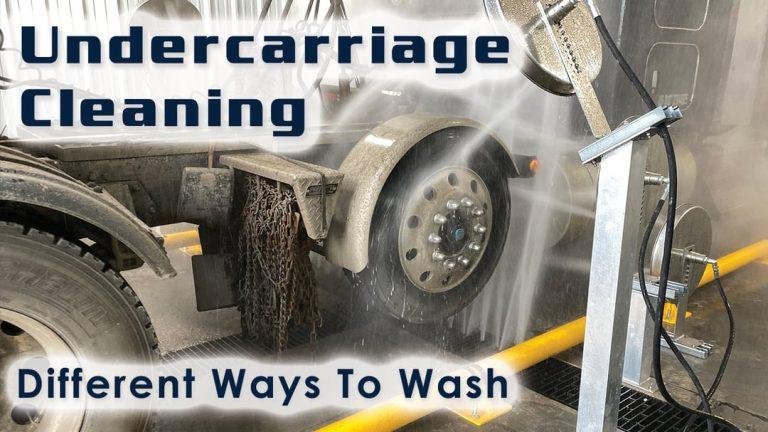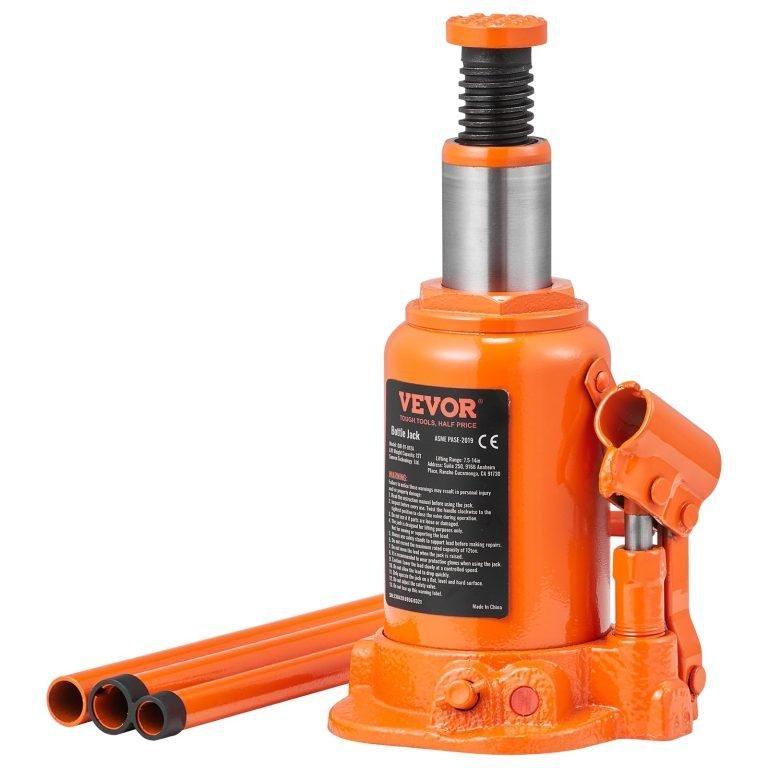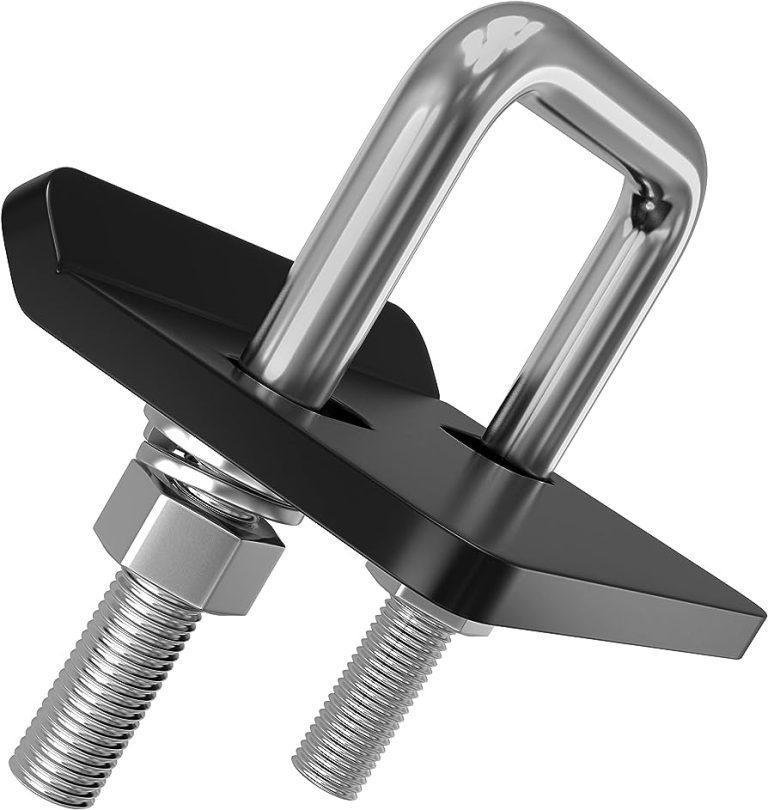The standard trailer ball size is 2 inches in diameter. This size is commonly used for towing small to medium-sized trailers.
When you’re ready to hit the road with your trailer, it’s important to ensure that your vehicle’s hitch is equipped with the correct size ball. The standard trailer ball size, measuring 2 inches in diameter, is widely used for towing small to medium-sized trailers.
This size ensures a secure and reliable connection between the trailer and the hitch. By using the appropriate trailer ball size, you can have peace of mind knowing that your trailer is properly attached and safe for transport. Whether you’re hauling camping gear, moving furniture, or transporting recreational vehicles, it’s crucial to check the trailer ball size before embarking on your journey.

Credit: www.amazon.com
The Importance Of Choosing The Right Trailer Ball Size
Choosing the right trailer ball size is essential for safe towing. The standard trailer ball size varies depending on the weight capacity of the trailer, ranging from 1 7/8″ to 2 5/16″. Incorrect trailer ball size can lead to instability and potential accidents while on the road.
Selecting the correct trailer ball size for your towing needs is crucial to ensure safe and efficient trailer towing. Using the wrong trailer ball size can lead to improper weight distribution, instability, and potential accidents. To make the right choice, consider the following factors:
Factors To Consider When Selecting A Trailer Ball Size:
- Weight capacity and towing requirements:
- Determine the maximum weight capacity of your trailer to match it with the towing capacity of your vehicle.
- Consider the weight of the cargo you’ll be carrying as well.
- Ensure that the trailer ball size can adequately support the total weight to maintain control and stability while towing.
- Trailer hitch types and compatibility:
- Familiarize yourself with the different types of trailer hitches, such as bumper hitches, gooseneck hitches, and fifth-wheel hitches.
- Each hitch type requires a specific trailer ball size, so be sure to choose one that is compatible with your hitch design.
- Understanding the different trailer ball sizes available:
- Trailer balls come in various sizes, typically measured in diameter (e.g., 1 7/8″, 2″, 2 5/16″, or 3″).
- The size you need depends on the size of the trailer coupler, which is the component that connects the trailer to the tow vehicle.
- Common trailer ball sizes and their applications:
- 1 7/8″ trailer ball size:
- Suitable for smaller trailers, such as utility trailers or small boat trailers.
- Maximum towing capacity is usually around 2,000 to 3,500 pounds.
- 2″ trailer ball size:
- This size is commonly used for medium-sized trailers, including campers and small livestock trailers.
- It can handle towing capacities ranging from 3,500 to 8,000 pounds.
- 2 5/16″ trailer ball size:
- Ideal for larger trailers, including car carriers and larger livestock trailers.
- Provides a towing capacity ranging from 6,000 to 30,000 pounds, depending on the specific model.
- 3″ trailer ball size:
- Reserved for heavy-duty hauling applications, such as large construction equipment trailers or industrial-purpose flatbeds.
- Offers a higher towing capacity, typically exceeding 30,000 pounds.
- Determining the appropriate trailer ball size for your vehicle:
- Measure the diameter of your trailer coupler to determine the right trailer ball size.
- Ensure that the trailer ball size matches the coupler’s diameter precisely.
- Consider consulting with professionals or referring to the vehicle’s owner’s manual for specific recommendations.
By adhering to the specified trailer ball size for your towing needs, you can enhance safety, improve stability, and promote a smoother towing experience. Always prioritize the compatibility of your trailer hitch and the weight capacity it can safely handle.
With the right trailer ball size, you’ll be able to tow your trailer with confidence and peace of mind.
How To Measure And Identify The Standard Trailer Ball Size
The standard trailer ball size can be measured and identified by following these simple steps. This information is essential for ensuring a secure hitch connection and safe towing experience.
If you’re new to towing or simply unsure about the standard trailer ball size, don’t worry! In this section, we will guide you through the process of measuring and identifying the correct ball size for your towing needs. By following these steps, you’ll be well-equipped to ensure a safe and secure towing experience.
Step-By-Step Guide To Measuring The Trailer Ball Size:
- Required tools and equipment:
To accurately measure the trailer ball size, you will need the following:
- Tape measure or calipers: These tools will help you determine the diameter of the trailer ball.
- Ruler or measuring tape: Used to measure the shank length of the trailer ball.
- Measuring the diameter and shank length:
- Start by measuring the diameter of the trailer ball. Place the tape measure or calipers across the widest part of the ball, ensuring you get an accurate measurement.
- Next, measure the shank length of the trailer ball. This refers to the portion of the ball that fits into the hitch receiver. Use a ruler or measuring tape to measure the length from the base of the ball to the end of the shank.
Identifying The Standard Trailer Ball Size For Your Towing Needs:
- Consult vehicle and trailer manuals: These manuals often provide specifications and recommendations regarding the trailer ball size required for safe towing. Look for information related to towing capacities and recommended ball sizes.
- Seeking advice from professionals or experts: Reach out to towing professionals or experts who can provide guidance based on their experience and knowledge. They can recommend the appropriate ball size based on your specific towing requirements, ensuring compatibility and safety.
Remember, ensuring that you have the correct trailer ball size is crucial for safe towing. Failing to use the correct size can result in issues such as instability, improper weight distribution, or even detachment of the trailer from the towing vehicle.
By following these steps and consulting the appropriate resources, you’ll be well on your way to selecting the right trailer ball size for a worry-free towing experience.
Choosing The Optimal Hitching Solution For Your Trailer
The standard trailer ball size is an important consideration when choosing the optimal hitching solution for your trailer. Ensure a secure and stable connection with the right ball size for safe towing.
If you’re a trailer owner, it’s crucial to understand the different hitching options available. Choosing the right hitch not only ensures a secure connection between your vehicle and trailer but also improves towing stability and safety. In this section, we’ll explore various hitching options, including ball mounts and weight distribution hitches, as well as gooseneck and fifth wheel hitches for larger trailers.
Additionally, we’ll discuss how to select the right hitch for your trailer ball size, match the hitch class to your towing requirements, and consider additional features and accessories.
Exploring The Different Hitching Options Available:
There are several hitching options available in the market, each designed to accommodate different trailer types and towing needs. Let’s take a look at the main options:
- Ball mounts and weight distribution hitches:
- Ball mounts are the most common and simplest hitching solution. They consist of a receiver tube into which a trailer ball is mounted. Ball mounts come in various sizes to match different trailer ball diameters.
- Weight distribution hitches are essential when towing heavy loads. They distribute the trailer’s weight evenly, improving stability and preventing undue stress on the tow vehicle.
- Gooseneck and fifth wheel hitches:
- Gooseneck hitches are commonly used for towing larger trailers, such as horse trailers and rvs. They involve a hitch ball mounted in the truck bed, providing enhanced maneuverability and stability.
- Fifth wheel hitches are similar to gooseneck hitches but connect to a kingpin mounted on the trailer. They are commonly used for towing large, heavy trailers and offer excellent stability and weight distribution.
Selecting The Right Hitch For Your Trailer Ball Size:
When it comes to selecting the right hitch for your trailer, it’s essential to consider the ball size. The trailer ball size determines the diameter of the trailer’s coupler, which connects to the hitch ball. Ensure you choose a hitch with a compatible ball size to establish a secure and reliable connection.
Here are some ball sizes and their common uses:
- 1-7/8″ ball:
- Commonly used for smaller trailers such as utility trailers and small boat trailers.
- 2″ ball:
- Suitable for medium-sized trailers like car haulers, larger boat trailers, and campers.
- 2-5/16″ ball:
- Commonly used for larger trailers such as horse trailers, rvs, and heavy-duty utility trailers.
Matching The Hitch Class To Your Towing Requirements:
Hitches come in different classes, each designed to handle specific towing capacities. Matching the hitch class to your towing requirements is crucial for safe and efficient towing. Here are the main hitch classes and their capabilities:
- Class 1 and 2:
- Designed for lightweight trailers and smaller loads. Commonly used for towing bicycles, small boats, or cargo carriers.
- Class 3 and 4:
- Ideal for towing medium-sized trailers, including larger boats, campers, or utility trailers. Can handle heavier loads and provide increased stability.
- Class 5:
- Suitable for heavy-duty towing, such as large rvs, horse trailers, or construction equipment. Offers the highest towing capacity and strength.
Considering Additional Features And Accessories:
Beyond the hitch type and class, there are additional features and accessories to consider for a more convenient towing experience. These include:
- Hitch locks: Ensure the security of your trailer by using hitch locks to prevent theft.
- Sway control: Provides stability and reduces trailer sway, especially when dealing with crosswinds or passing vehicles.
- Brake controllers: Necessary when towing trailers with electric brakes, allowing synchronized braking between the vehicle and trailer.
- Weight distribution systems: Improve weight distribution and towing stability for trailers with uneven weight distribution.
- Towing mirrors: Enhance visibility and safety by installing towing mirrors for improved rearward visibility while towing.
By carefully considering the options outlined above, you can choose the optimal hitching solution for your trailer. Remember to prioritize safety, compatibility, and stability to ensure a smooth and hassle-free towing experience.
Tips And Best Practices For Hitching And Towing Safely
Looking for tips on safely hitching and towing? One important aspect is knowing the standard trailer ball size to ensure a secure connection and proper weight distribution. Find out more about this essential detail to make your towing experience smoother.
Properly attaching and securing the trailer ball to the hitch:
- Ensure that the trailer ball matches the hitch size and weight capacity.
- Place the trailer ball onto the hitch ball mount, aligning the holes.
- Insert the trailer ball pin through the holes and secure it with a locking clip.
- Tighten the trailer ball nut using a socket wrench until it is snug.
Using safety chains and ensuring a secure connection:
- Cross the safety chains underneath the trailer tongue and attach them securely to the hitch.
- Keep the chains as short as possible without restricting movement.
- Double-check that the chains are properly connected, providing an additional layer of security if the trailer becomes disconnected from the hitch.
Checking for tightness and verifying proper alignment:
- Regularly inspect the trailer ball for any signs of loosening or damage.
- Ensure that the trailer ball is secured tightly to the hitch to prevent any wobbling or shifting during towing.
- Verify that the trailer coupler is aligned with the trailer ball to ensure a proper connection.
Maintaining trailer and hitch components for optimal performance:
- Clean the trailer ball and hitch regularly to remove any dirt or debris that may affect their functionality.
- Inspect the hitch components, including the ball mount and coupler, for signs of wear or damage.
- Replace any worn or damaged components to ensure safe and efficient towing.
Regular inspection and lubrication:
- Conduct regular inspections of the trailer ball, hitch, and safety chains for any signs of rust, corrosion, or damage.
- Lubricate the trailer ball with a high-quality grease or lubricant to reduce friction and ensure smooth towing.
Addressing wear and tear or damage promptly:
- Promptly address any wear and tear or damage to the trailer ball, hitch, or safety chains.
- Consult with a professional if you notice any significant damage or safety concerns.
- Replace any worn or damaged components to maintain the safety and performance of your towing setup.
By following these tips and best practices for hitching and towing safely, you can confidently and securely tow your trailer, ensuring a smooth and worry-free experience. Remember to regularly inspect and maintain your trailer and hitch components to optimize their performance and extend their lifespan.
Safe travels!
Frequently Asked Questions On What Is The Standard Trailer Ball Size?
What Is The Most Popular Trailer Ball Size?
The most popular trailer ball size is 2 inches. It is widely used for towing trailers of different sizes and weights. With its versatility and compatibility with a wide range of trailers, the 2-inch trailer ball size is commonly available and commonly sought after.
It provides a secure connection between the trailer hitch and the towing vehicle, ensuring safe and efficient towing. Whether you have a small utility trailer or a larger rv, the 2-inch trailer ball size is likely to fit your towing needs.
It is important to select the correct trailer ball size that matches your trailer’s coupler for optimal towing performance and safety. Always consult the trailer’s manual or manufacturer’s recommendations to ensure the proper trailer ball size is used.
How Do I Tell What Size Trailer Ball I Need?
To determine the size of trailer ball you need, follow these steps: 1. Check the coupler size: measure the coupler on your trailer to determine its size, usually 1-7/8″, 2″, or 2-5/16″. 2. Examine the trailer documentation: look for the trailer specifications or owner’s manual, as they often indicate the required trailer ball size.
3. review the hitch assembly: inspect your trailer hitch receiver or ball mount for the designated ball size. It should be stamped or labeled on the item. 4. Consult a professional or the manufacturer: if unsure about the appropriate trailer ball size, seek advice from an expert or contact the trailer manufacturer for guidance.
Remember, selecting the correct size of trailer ball is crucial for safe towing. Match the trailer ball size with the coupler size to ensure a secure and reliable connection.
What Is The Standard Ball Size For A Travel Trailer?
The standard ball size for a travel trailer is 2 inches.
What Size Ball For A 6X12 Trailer?
A 6×12 trailer requires a ball size of 2 inches for proper towing. The 2-inch ball is the most commonly used size for trailers of this size. Remember to always check the trailer’s owner’s manual or consult a professional for specific towing requirements.
Conclusion
Understanding the standard trailer ball size is essential for safe and efficient towing. By ensuring the proper ball size, you can avoid potential accidents and damage to both your vehicle and trailer. It is important to know that the standard ball sizes are 1 7/8 inches, 2 inches, and 2 5/16 inches, with the most common size being 2 inches.
When choosing the appropriate ball size, consider the weight capacity of your trailer and match it with the corresponding ball size. Always refer to your vehicle’s owner’s manual or consult with a professional to determine the correct ball size for your specific towing needs.
Regularly inspect and maintain your trailer hitch to ensure a secure and reliable connection. By following these guidelines, you can enjoy worry-free towing experiences while keeping yourself and others safe on the roads.




